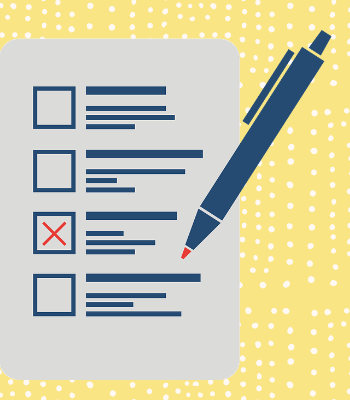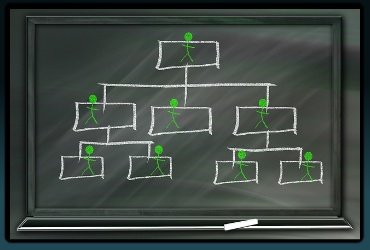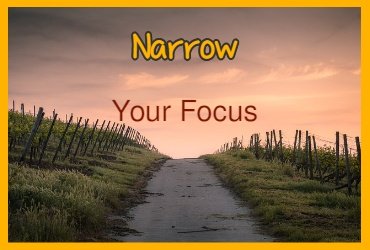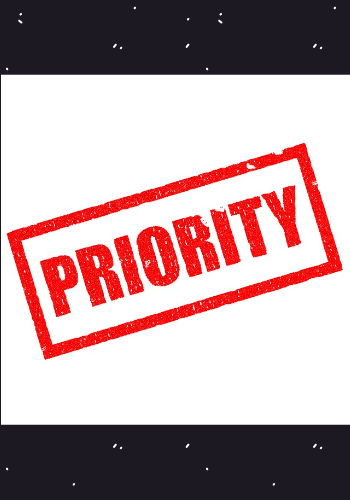As an independent musician, you'll have to get big projects done. Recording a record, building a website, planning a live tour, and developing a Spotify following might all be on your plate -- at the same time!
It can be overwhelming. How do you decrease the overwhelm?
What Is Overwhelm?
Overwhelm is having too many things to think about at one time. To decrease overwhelm, don't think about so many things!
But what if you forget something? Making an album, or running a marketing campaign for said album means taking care of a lot of details. Well, you've got to capture, organize, and store those steps so you don't have to think about them much.
So, the big 'secret' is only two things.
Capture Ideas In A Coherent Form & Focus
- Capture everything you might need to do in a project, in an organized form that's easy to understand (we'll talk about the specifics of this in a bit).
- When performing one of the tasks on the list of things you came up with, in your mind, keep only what you need to think about for that task, in that moment. Focus.
Getting ideas captured, organized, and stored allows your brain to have the freedom to focus on what you're doing in the moment, and let go of the other things.
Example: You're recording a record, in order to increase your fan base and generate sales to help support you. That's the big picture.
You have written down everything you need to do to complete the record.
But right now, you're doing the accordion track. You don't need to think about the tuba track, how you're going to mix the song, what the song order will be, or any of thousand other details. Right now, you're recording an accordion track, for the purposes of making a great record to further your music career.
That's your one job in that moment.
Message To My Brain . . .
"Hey brain. I've got those other things written down. Right now, let's do the accordion, so we can make a great album."
Organizing doesn't sound like fun, to me. But the results are fun! When you're organized, you get more done in less time, and you feel better while you're doing it.
Brainstorming & Capturing Ideas
How do we get to that point? Well, you've got to take some time at the beginning of a project, and brainstorm all tasks involved in the project. Then capture and organize everything you've brainstormed.
Don't worry about getting every single detail down. You'll think of more tasks as you go. You can add them later.
Now, a list is not the final form for this information. Don't worry if you've tried lists before and you don't like them.
How Granular Do You Need To Get?
Your tasks need to be down to the level that you can comfortably hold in your brain. "Record an album" is not detailed enough. "When walking to your guitar to record, put your left foot in front first, and then your right foot" is too detailed.
Is, "Cut guitar tracks for song # 1" detailed enough for you? Or would it be better for you to list the tasks for cutting a verse guitar rhythm track, doubling it, then cutting the choruses and solos as separate tasks.
It's up to you, really. When you've got a task chunk size that's comfortable for you, you don't have to go into any more detail.
Lists Don't Work For Big Projects -- Mind Maps Do
Maybe lists don't work for you. They don't for me, unless it's just a few items, such as a todo list for the day. So, I need to organize information about complex projects in a form that's easy for me to digest.
I want to be able to see everything at a glance. I want to be able to go from big picture, to drilling down to details, quickly and easily. I want it to be easy to digest.
For me, that's a mind map. Something else might work for you. That's OK. The point is, brainstorm at the beginning of a project, list the tasks you'll likely do, and organize them in a form that makes sense to you.
Hierarchical formats work best, That is, storing info in some sort of structured format from big picture, down to details.
This is a working mind map I made for the video that goes with this article. Click any of the small circles to open up that branch, and see the subtopics inside.
Structure, Relationships & Hierarchy
A mind map works differently than a list . . .
- A mind map shows relationships between groups of information and hierarchy, visually.
- A mind map can use icons/symbols/images which contain large amounts of information in a glance.
In a mind map, we can see that getting the tambourine track finished will finish tracking for that song, which will be 8 out of 12 sounds finished tracking for the CD. At a glance, we see how each piece of information sits in the structure, and how it relates to the main goal.
This fits the way to brain tends to store information, so it's easy to digest. If it's in a mind map, it also means we don't have to hold this information in our mind.
Using WiseMapping To Plan Big Music Projects
This video covers the mind mapping process I use for big projects.
Images & Symbols
Think about it for a sec. If you look at a picture of a an orange, striped cat, sitting on a green sofa, with a vase full of flowers of different colors next to the cat, you pretty much take that information in, in an instant. If you process information typically, that is.
But I just had to make a fairly long sentence to describe it, and you don't even know what colors the flowers are, or where they are in relation to the cat and the sofa. You can get a lot across in a very short time with images.
And symbols can do the same thing in a different way. You can use a little icon of a drum set in your mind map, next to the word, 'drums'. Your mind might grasp the symbol better than the word.
Shut Down What You Don't Need To Narrow Your Focus
There are three states/activities in which we get a lot done.
- A relaxed state of creativity: That's usually after we've input a lot of data, and maybe worked in a focused way on something, and then have gone off and done something else. It's why we sometimes come up with ideas and solutions after we sleep.
- Planning stage: When we are looking at the big picture, setting goals and planning.
- Highly focused: When we narrow our attention down and shut outside distractions down. This is the state to be in when practicing your instrument,
Notice that planning requires an overview, and focus does not. We need planning in order to know what to focus on. An important part of focus is that we shut down what we're not focusing on.
That's why I close down any mind map tree branches I'm not currently working on.
A mind map allows you to go from planning level to focus level in an instant. And vice versa.
Organizing Principles
We do need organizing principles, so we know how to easily organize the info. So, let's talk about ways to organize big music projects via organizing principles. What's an organizing principle? It's easier to give examples, than to explain.
- Alphabetical is an organizing principle. I don't recommend it, but you could list out all your tasks for the project, alphabetize them, and do them in that order.
- 'Time to complete' is an organizing principle. You can decide which tasks in a project will take the most time, and get those done first, or last.
- Level of difficulty is an organizing principle. Some people like to tackle their most difficult tasks first.
Three Organizing Principles I Use Regularly
In terms of large projects, we're going to talk about 3 organizing principles.
- Priority
- Function
- Time/Sequence
And we'll talk some about organizing smaller tasks, as well.
Priority Organization
You can organize by what's most important. But how do you know what's most important? Well, you can use another organizing principle to sort importance.
Let's suppose you're a musician who already has a mailing list. You can sort for immediate revenue. In other words, you can order the tasks by which will make you money the quickest. So, you make an offer to your email list, and post it to social media.
I tend to prioritize by tasks which aim at long-term growth and improvement. I do vocal exercises focusing on specific aspects of my voice, almost every day.
Why?
Why I Prioritize Singing
Singing is a big part of how people perceive a song. Being a better singer will help me in multiple ways.
And I know if I don't prioritize it, I'll end up going to the store, folding laundry, or working on a logo. These are all things that need to get done, but if I prioritize what will help long-term, I'll continually improve at a faster rate.
That's my priority. Yours may be different.
Sorting by priority is something I use more at the top level and the bottom level -- not at the mid level. What I mean is, if I'm trying to decide which major project to tackle next, I prioritize by importance, usually with a filter for long-term gain.
When I've got a set of 5 tasks for the day, I also use this same method.
I Don't Tend To Prioritize Mid-Level Tasks
However, if I'm working on finishing a song (a mid-level task, I've already decided to do) and I need to cut bass and guitar tracks, I don't prioritize by importance.
Why not?
Neither is more important than the other as neither will be in a finished project until they are both finished. You might as well flip a coin, or choose randomly. Just pick up one or the other and get started.
Organizing By Function

If you were tasked with starting a company and knew you needed staff, you wouldn't hire random people. You might hire by function/role.
2 HR people
15 engineers
3 managers
5 support staff (secretaries)
2 IT people
You can organize music projects by function, as well.
Let's suppose you're recording a record (whatever that means these days).
You might have the project broken down by function, or stage.
~~ Choosing songs
~~ Arranging songs
~~ Recording songs
~~ Mixing & mastering
~~ Artwork & Liner Notes
~~ Admin (ISRC codes, copyright, bar code, UPC code)
Check out this mind map for releasing a record.
Organizing By Time/Sequence
Let's suppose your big music goal is to have a sustainable music career that supports you, and allows you creative freedom. Your idea is to have a vibrant and engaged community of fans who help you do this.
Now, let's suppose you're making a video for you fans, on how you write a song. The purpose of this video is to draw potential fans more deeply into your world to engage them on a deeper level, as part of the above goals.
Career that supports you/fans/freedom
>> Engage fans
>>>> Video about how you write songs
It might make sense to organize the video tasks by sequence/time, rather than function. In fact, you don't really need to plan the sequence. You can just write a song and capture it on video as you go.
Plan, or not, you're following the sequence of tasks as you do in life.
Now, if you were making a tutorial for your fans, on how to write and record songs, you might create a stronger sequence structure.
For instance, you might break it down like this . . .
How to write and record a song
1) Come up with a song idea
2) Write the lyrics
3) Figure out the melody/chords
4) Arrange the song
5) Record the song
In this case, you might treat each of these steps as a separate module. You might sit down, do a brief introduction of each stage, give three examples of how you approached that stage, and the add a conclusion.
You can zoom in and out of this mind map, and drag to move it around.
And you might go through them in the order you actually do them. That's sequence/time organization.
The same would largely be true if you were making a video about how to play one of the songs you'd written. It makes sense to show them in the order of the song.
I tend to use time/sequence organizing once I drill down into other forms of organizing. In other words, I do big picture with function and priority, and then I might order the tasks within a small part of the function by sequence.
How To Decide Which Sorting Method To Use
This isn't an article of rules. It's principles you need to integrate, and guidelines to guide you. You use what makes sense.
Let me give examples.
EXAMPLE I: Music Marketing & Promotion
Let's suppose you're overwhelmed by the number of things you can do to promote your music.
- Write them all down. Seriously. Spend an hour writing down everything you can think of.
- Divide them up and group them by function, or category: posting to social media, press releases, SEO articles, buying ads, playing live shows, publicity, co-promotions with other artists.
- Put each task in one category, in a mind map
- Take the functions, and order by priority, using long-term gain as your filter. It's OK if you don't know which will bring the most gain long-term, just guess.
- Take #1 function on your priority list, drill into the tasks underneath it, and sort by function, or time/sequence.
- Start with the top task in your top priority function. Mark it complete when done, and go on to the next one.
EXAMPLE II: Recording A Record/Album/CD
Depending on how you work, it makes sense to break down recording a record either by song, or by function. I record solo, using a drum plug-in for drums. But next project, I might have a drummer.
If I'm going into the studio with a drummer and a bass player, we will probably record all the drum and bass tracks first (commonly known as cutting basic tracks), then do overdubs. In this case, it makes sense to organize by function.
Basic tracks >> overdub guitars >> overdub keyboards >> overdub vocals >> mix >> master.
Under each category, you'd list each song. Check them off as you go. I keep track by changing the font color of each completed item to red.
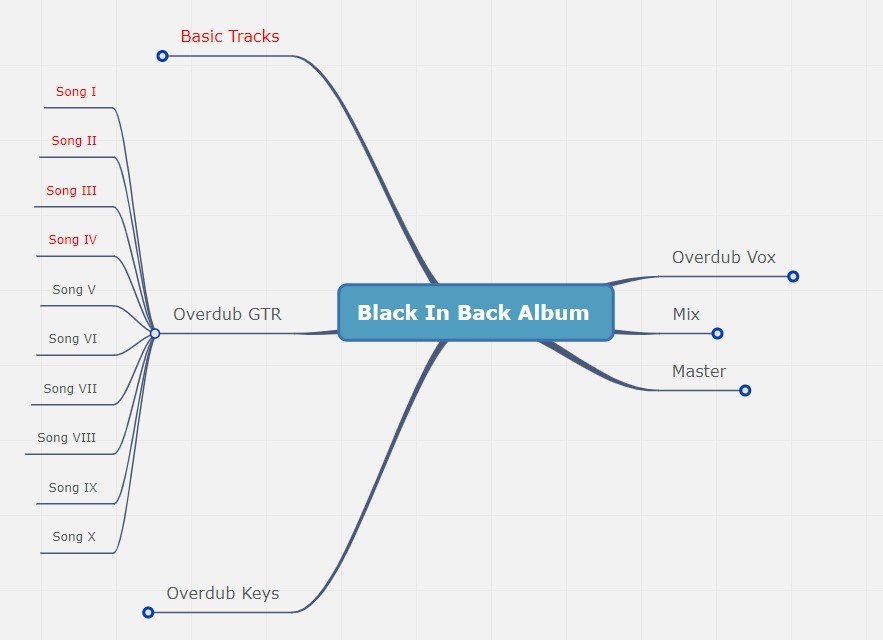
Album project with basic tracks finished, and guitars finished on 4 songs
As for me, since I record with a virtual drum set, I don't need to set up microphones each time. I just call up the VST in a preset I've tweaked, and I'm ready to go. Plus, I usually don't have the drums planned out until later in the recording.
For this situation, it makes sense to have the songs be my main categories, and underneath each songs, list drums, bass, guitars, keys, vocals, mix, and master. And I check them off as I go.
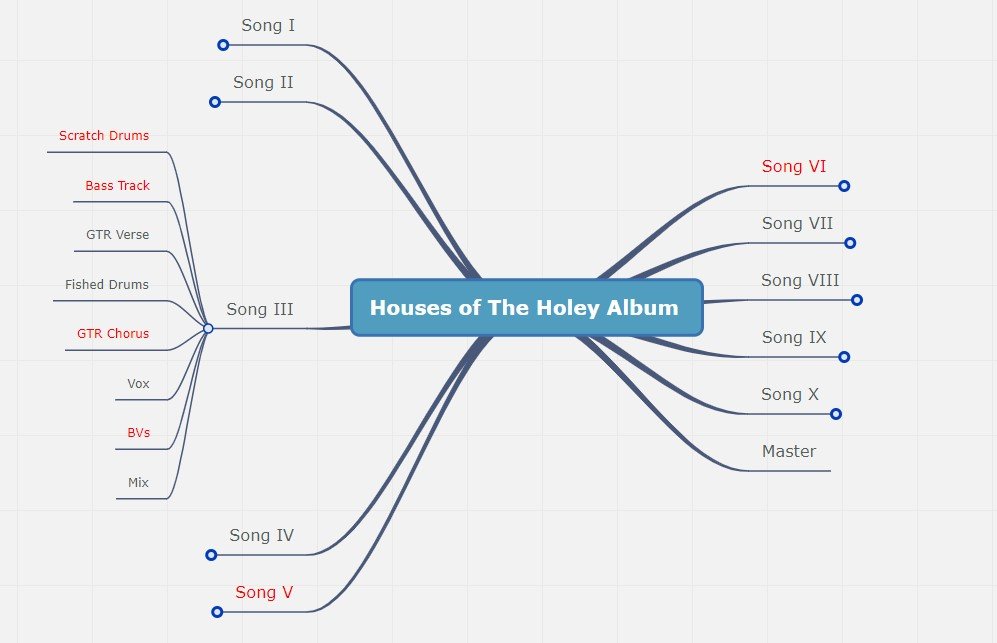
Solo album project organized by song, rather than function.
They can be done in any order. On any day, I can open up the mind map and pick any incomplete section and go for it.
In the example, some songs are completed (red). I can open up any of the blue songs, and see exactly where I am, and what remains to be done. Then I can pick one blue track and go to work.
Conclusion: How To Avoid Overwhelm
One way to avoid overwhelm is to only hold what you need to have in your mind at the time, and store all the rest in an easily attainable form.
Mind Map
We can mind map, so that we don't have to hold all those tasks in out mind.
Keith
Resources
Wisemapping.com is the mind mapping software I use. I know folks that prefer Miro. Wisemapping is open source, and free. Miro has a free tier which is probably enough for what you want to do.
Download The Mind Maps From This Tutorial
Importing
If any of the maps below seem useful, you can download them, and import them into your own WiseMapping account by using the 'Import' button.
Downloads
Here are the useful mind maps I've created for this article.
